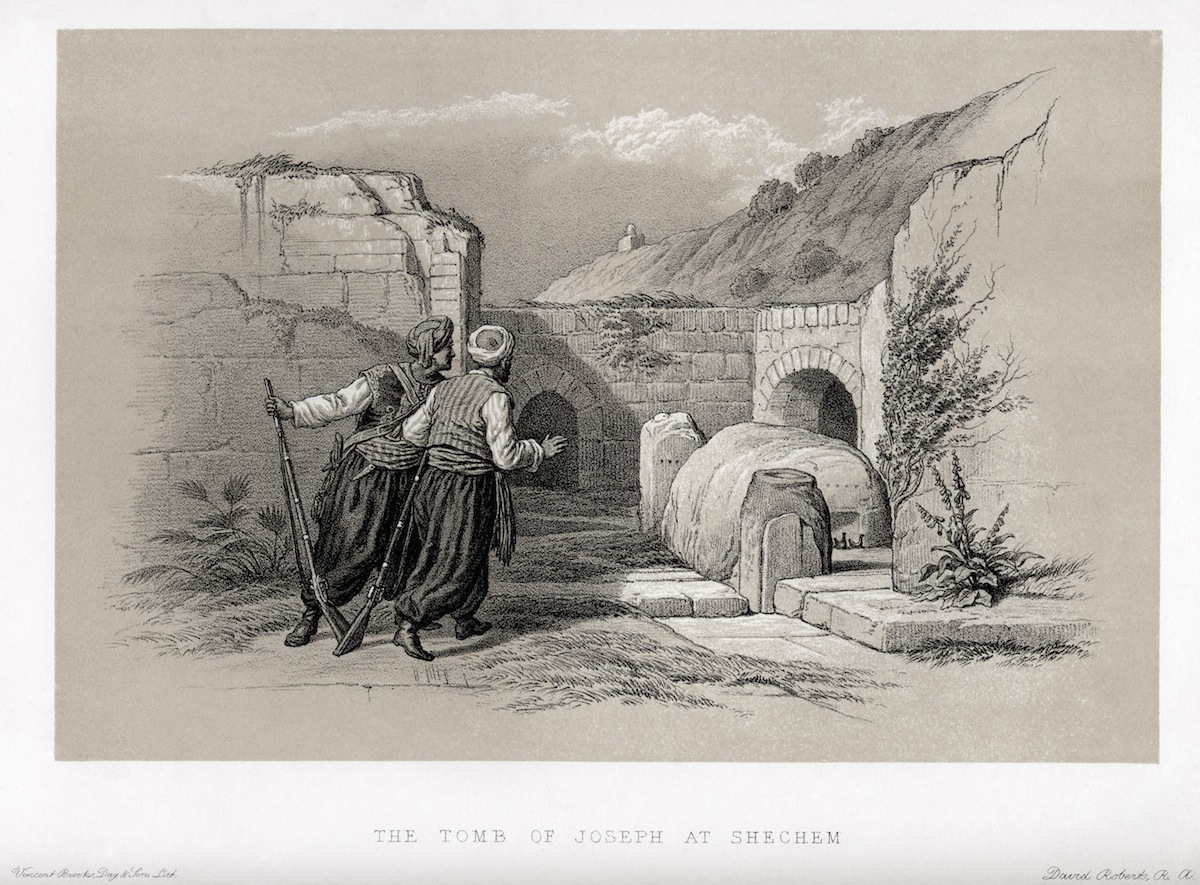
A site in Israel that was the target of attacks by Palestinians on Thursday night has a name that sounds very clear: Joseph’s Tomb.
But what actually makes that site so special? Though the Bible does contain information about where the biblical patriarch Joseph, the son of Jacob and the famous interpreter the Pharaoh’s dreams, is meant to be buried—according to the story, he dies in Egypt but his body is brought to Israel—it’s not as if the ancient text contains GPS coordinates.
For that reason, as Richard A. Freund explains in his book Digging Through the Bible: Modern Archaeology and the Ancient Bible, there are actually multiple locations that have, over the years, been seen as the patriarch’s final resting place. Because there is no archaeological proof of where Joseph was buried, the tomb, located in the city of Nablus, is more properly, according to Freund, a “relic” site rather than a historic site. Though the tomb may not have originally been built for the person after whom it’s named, that means—for non-believers at least—it still has significance because it has been seen as a holy place at least since medieval times.
The confusion over where exactly a biblical Joseph would have been buried is even more understandable considering what happened in the years between biblical times and the later medieval period. The area, originally known as Shechem, had once been the religious capital for the Samaritans (an actual religious group, not just figures from the story of the Good Samaritan). But it fell under Roman rule around the dawn of the common era and the city itself was largely wiped out as part of the ongoing fighting during that period. In the first century, the emperor Vespasian supposedly built a city near Shechem that he called Neapolis. After having its name shortened to Nablus about 600 years later, when the Romans were replaced by Arab rulers, it saw a series of conquests by groups including Crusaders and the Ottoman Empire. All that turmoil has made determining the exact site of Joseph’s burial, if such a site exists, all the more difficult.
As the present conflict shows, the complicated history of the city has continued into modern times. The site is particularly prone to disorder due to its politically controversial geography. The tomb is located in Nablus, which itself is situated in the West Bank. Despite its location in the larger of the two Palestinian territories, peace accords between Israel and the Palestinians left a small Israeli presence near the tomb. As TIME explained in 1996, the site “remained a tiny enclave peopled by devout Jews and, for protection, a few Israeli soldiers.” The tomb was also targeted by Palestinian attacks in 2000, and levels of access to the site have fluctuated in the years since as its difficult history persists.
More Must-Reads from TIME
- How Donald Trump Won
- The Best Inventions of 2024
- Why Sleep Is the Key to Living Longer
- Robert Zemeckis Just Wants to Move You
- How to Break 8 Toxic Communication Habits
- Nicola Coughlan Bet on Herself—And Won
- Why Vinegar Is So Good for You
- Meet TIME's Newest Class of Next Generation Leaders
Write to Lily Rothman at lily.rothman@time.com